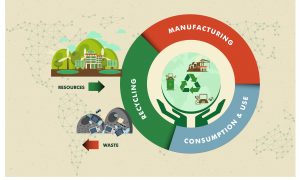[fusion_builder_container hundred_percent=”no” hundred_percent_height=”no” hundred_percent_height_scroll=”no” hundred_percent_height_center_content=”yes” equal_height_columns=”no” menu_anchor=”” hide_on_mobile=”small-visibility,medium-visibility,large-visibility” class=”” id=”” background_color=”” background_image=”” background_position=”center center” background_repeat=”no-repeat” fade=”no” background_parallax=”none” enable_mobile=”no” parallax_speed=”0.3″ video_mp4=”” video_webm=”” video_ogv=”” video_url=”” video_aspect_ratio=”16:9″ video_loop=”yes” video_mute=”yes” video_preview_image=”” border_size=”” border_color=”” border_style=”solid” margin_top=”” margin_bottom=”” padding_top=”” padding_right=”” padding_bottom=”” padding_left=””][fusion_builder_row][fusion_builder_column type=”1_1″ layout=”1_1″ spacing=”” center_content=”no” link=”” target=”_self” min_height=”” hide_on_mobile=”small-visibility,medium-visibility,large-visibility” class=”” id=”” background_color=”” background_image=”” background_position=”left top” background_repeat=”no-repeat” hover_type=”none” border_size=”0″ border_color=”” border_style=”solid” border_position=”all” padding_top=”” padding_right=”” padding_bottom=”” padding_left=”” dimension_margin=”” animation_type=”” animation_direction=”left” animation_speed=”0.3″ animation_offset=”” last=”no”][fusion_text]

Source: BGS Studios
The circular economy might come across as something that currently attracts a lot of buzz, but does not gain much traction in practice. IT is riddled with buzzwords, and this might be one of them. Or so many professionals seem to think. The truth is that the circular economy has become an expectation. Not just from the authorities, who want to promote green policies and reduce electronic waste, but also from end customers. Their interest is to both cut costs and practice social responsibility. This development will increasingly influence IT procurement strategies. To assist you in dealing with these changes, we’ve answered three common questions about the circular economy.
What is the circular economy?
You already know about, and probably have first-hand experience with, the circular economy in consumer markets. Recycling, use of biodegradable materials and using ‘waste’ as a resource for something else –think the way compost works, for example– are all elements of the circular economy. Basically, you are looking at anything that does away with the ‘produce, consume, dispose’ order of things. Instead, a product is either fully re-used, does not produce any waste, or the waste is used as a resource for another product.
In the context of IT, the main challenge is that a various array of metals are used in the hardware, especially in the circuitry and chips. Some of these are rare and valuable. Gold, silver and platinum spring to mind. Others are downright toxic, like lead and arsenic. It is therefore crucial to maximize the lifespan of hardware and recycle as much of it as possible. To minimize cost, but also to answer to environmental concerns. For this reason, Inframotion takes the circular economy very seriously.
How feasible is the circular economy?
The good news is that the circular economy is making inroads. According to the World Economic Forum, the idea has moved past being just a proof of concept and is having its influence on current economic models. A number of large corporations have added circular principles to their business models, including accurate measurements of use data and offering their goods as services rather than products to maximize the lifespan.
Inframotion supports these green initiatives by offering alternative ways of IT consumption. While it is still possible to buy hardware and software, we also offer possibilities of renting or leasing IT solutions. We also facilitate recycling of hardware, as systems that are obsolete in one market can still be very usable in another. And if such a solution is not available, we make sure that all discarded hardware is stripped of reusable materials, while toxic metals are carefully disposed of so they don’t end up in the environment.
Who demands a circular approach?
It is not just the governments that increasingly demand greener corporate policies, even though legislation remains an important driver for responsible lifecycle and waste management. A growing number of businesses are realizing that a policy of corporate social responsibility reflects well on them and improves their overall standing in the market. Supporting the circular economy is an important part of that.
Conversely, not abiding to standards in line with corporate social responsibilities will cause negative fallout. They have started to surpass governments on this front, becoming more proactive even if legislation is not fully up to date yet. Social pressure, rather than political pressure, is becoming the main reason for companies to go into CSR. That is not to say governments have no role in this. Most governments, including the European Union, keep on encouraging businesses to take corporate social responsibility seriously. And so they should.
Going full circle
By maximizing lifecycle of equipment and recycling (or properly disposing of) used IT equipment, we can reduce what is currently the fastest growing waste stream in Europe. Through this, Inframotion helps clients meet both their social and business aspirations while contributing to a truly circular economy.
If you’d like to learn more about what Inframotion can do for you, don’t hesitate to contact us.
[/fusion_text][/fusion_builder_column][/fusion_builder_row][/fusion_builder_container]
